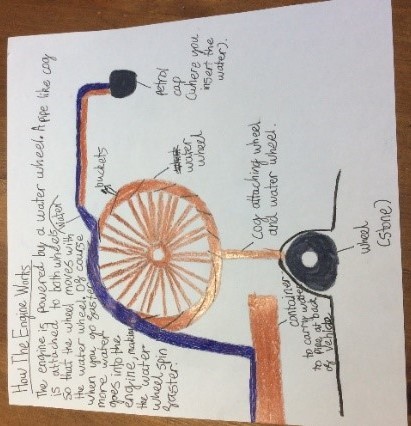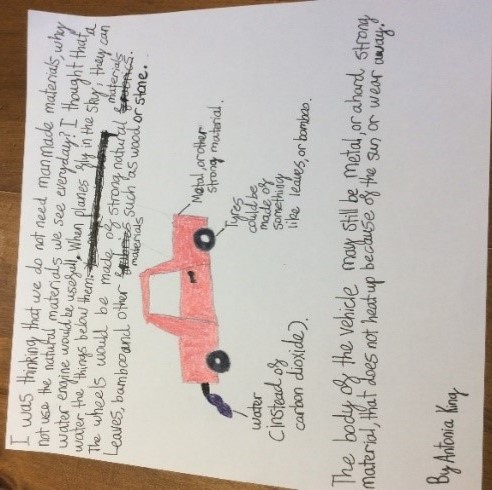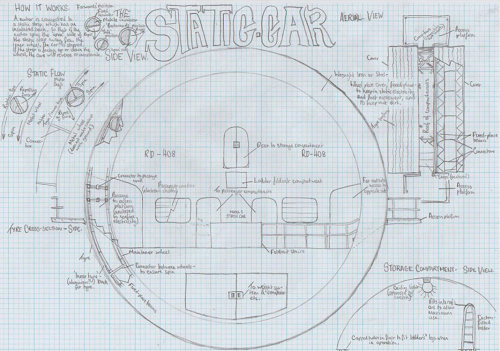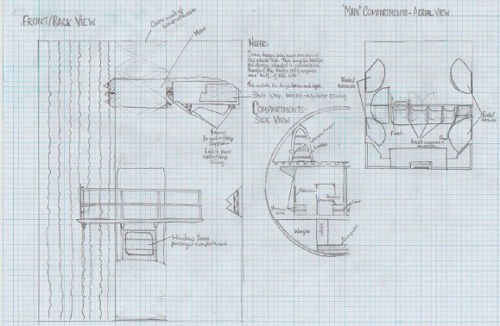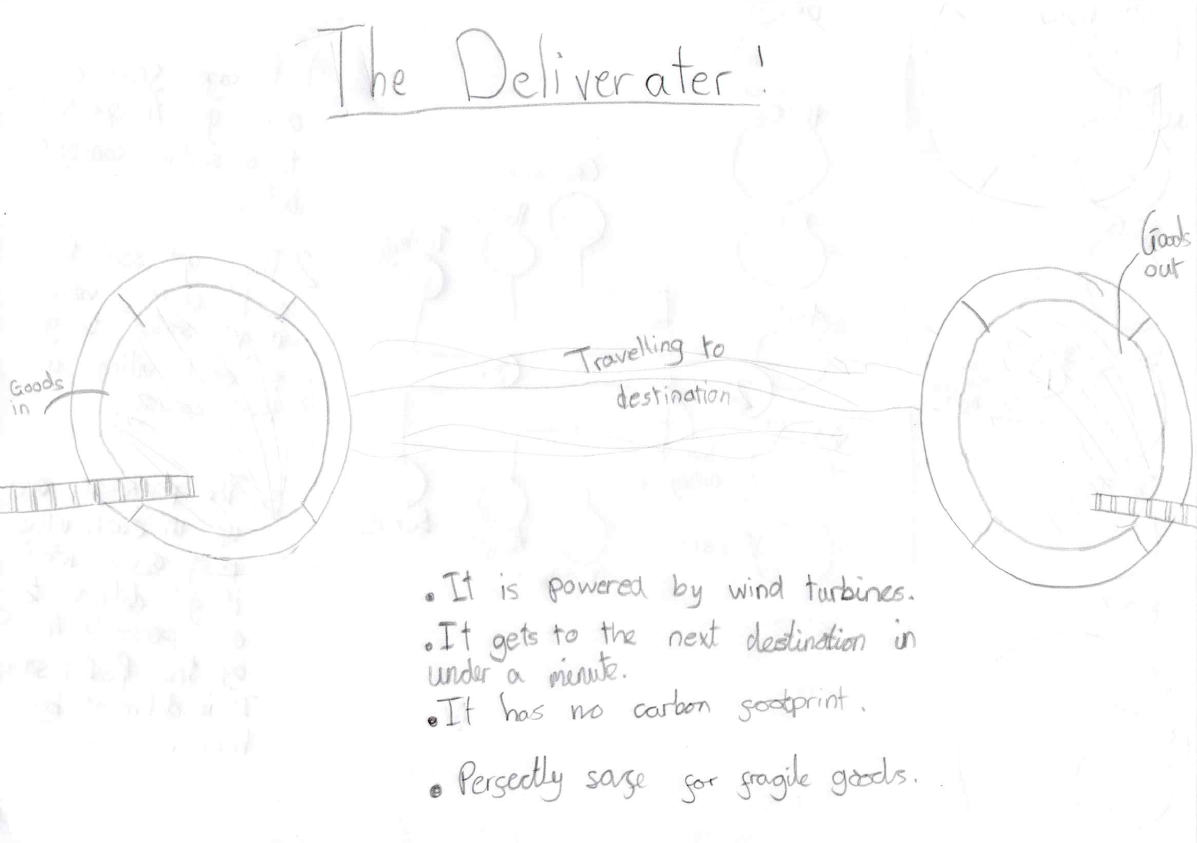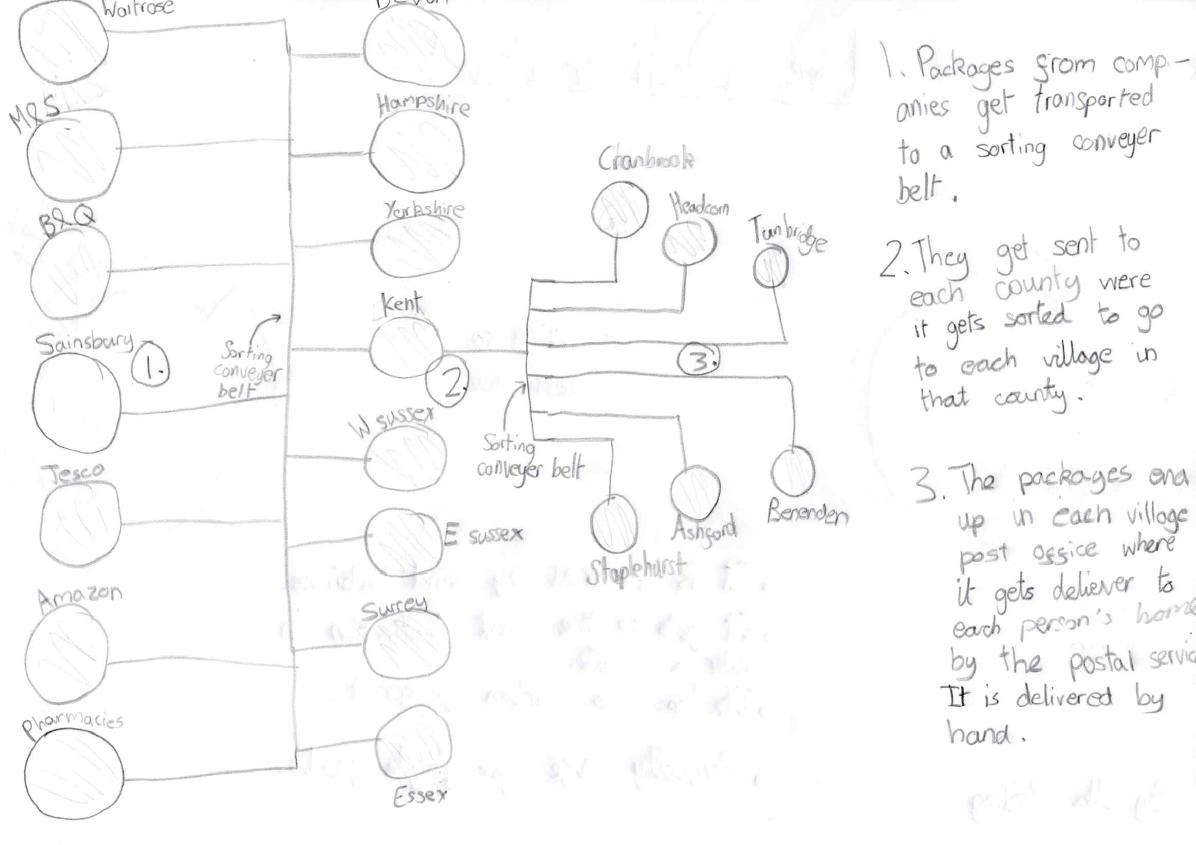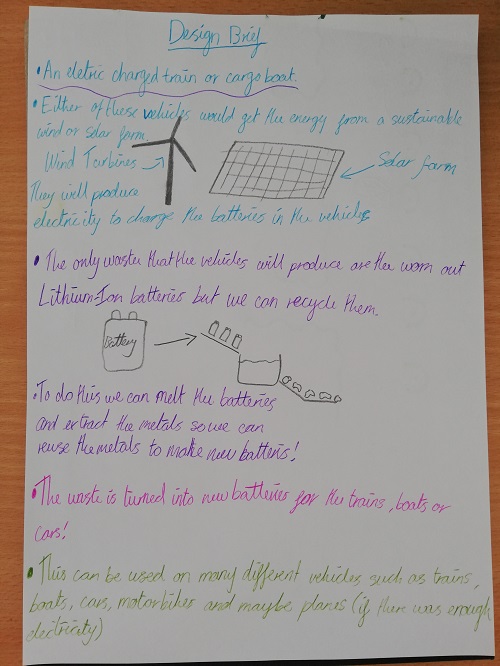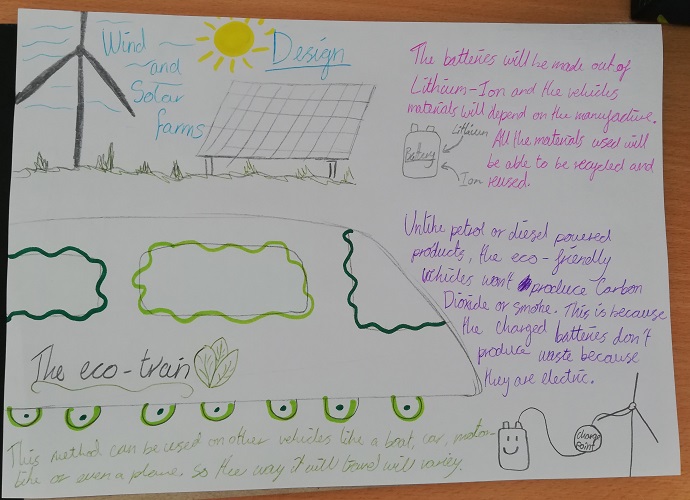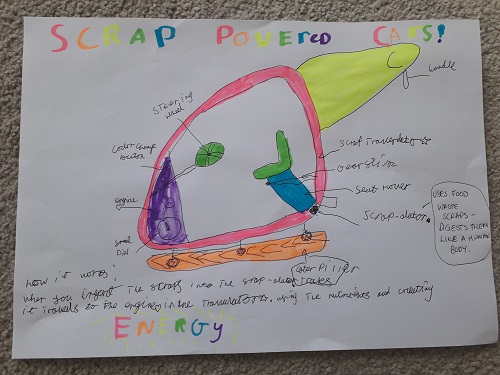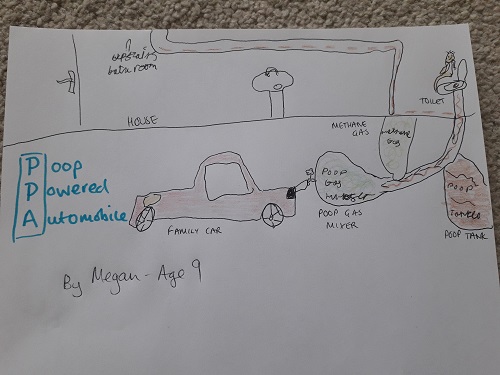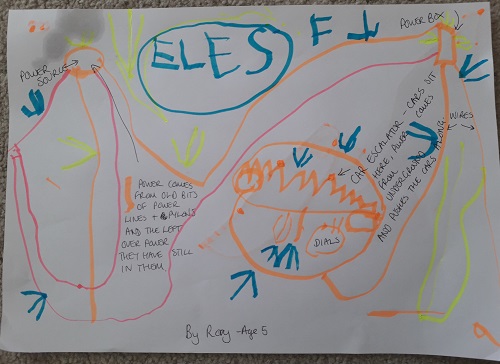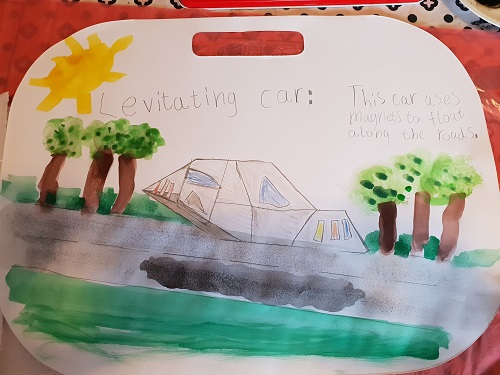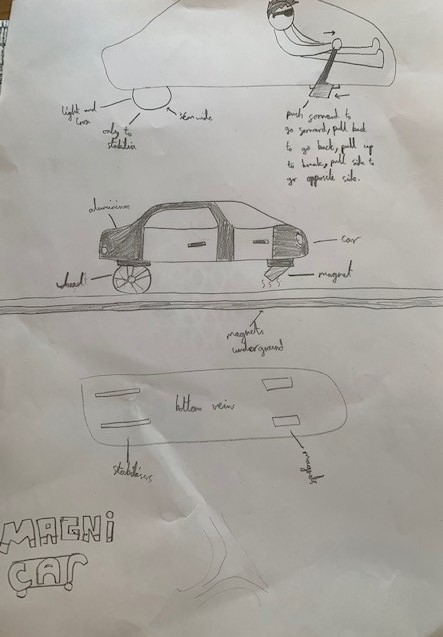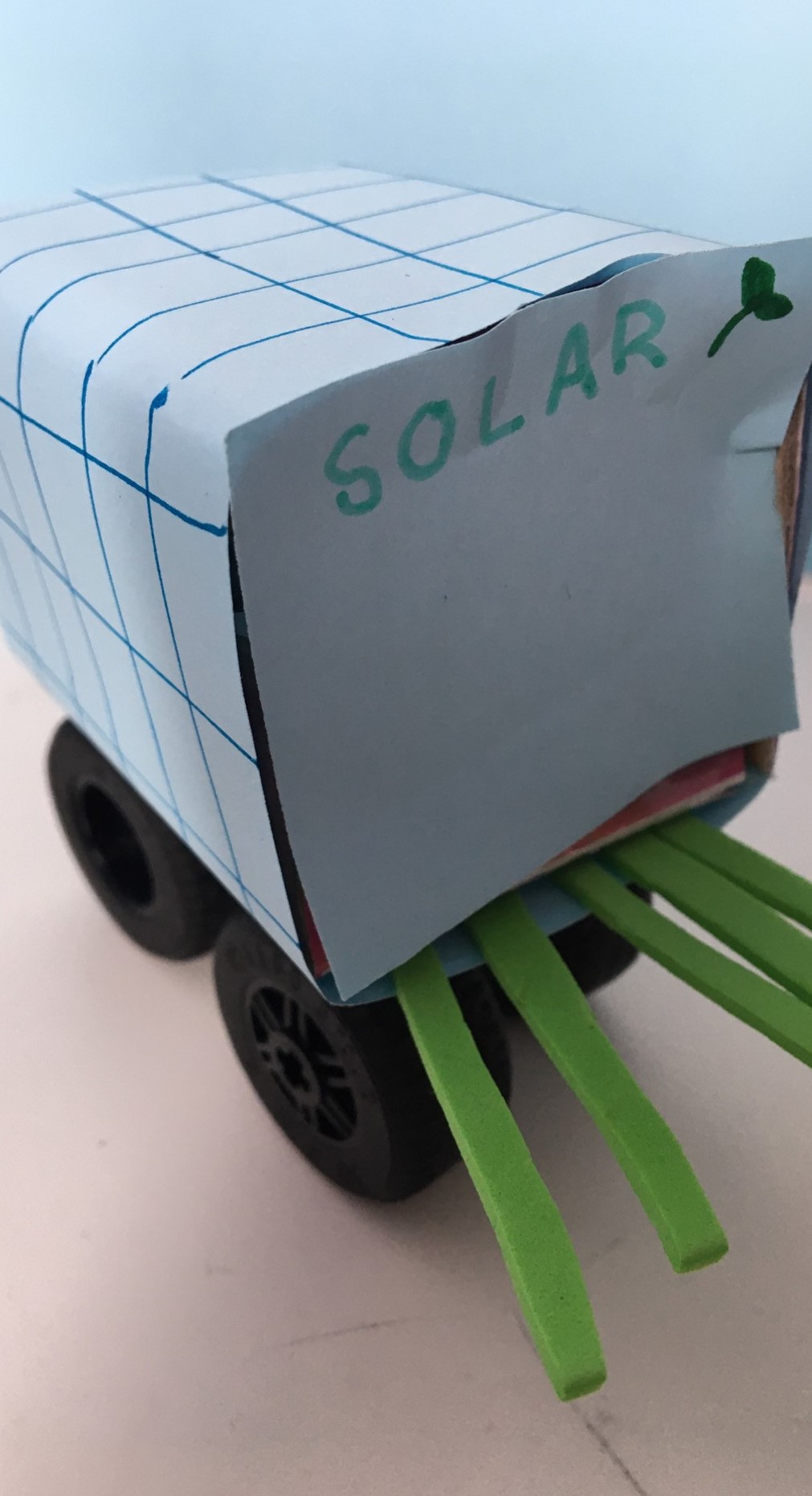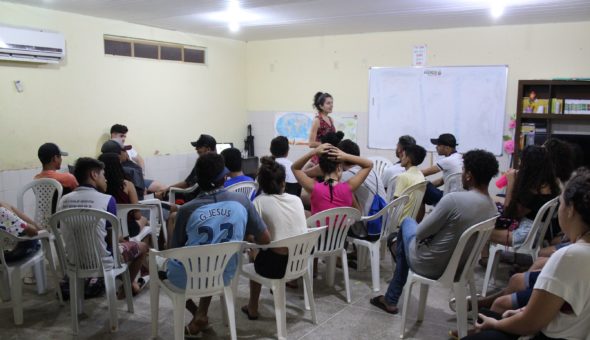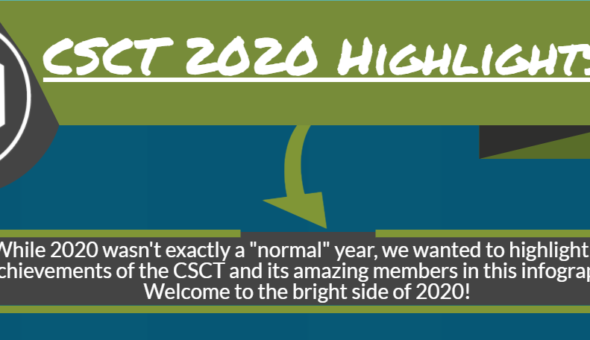 Over the summer of 2020, while our usual outreach activities were halted as we were busy staying at home, our Public Engagement Committee spent some time wondering what we could do to replace our usual outreach activities. After a bit of head-scratching, we decided to run a competition. The theme? The future of clean transport. The invited inventors? Children aged 5-13!
Over the summer of 2020, while our usual outreach activities were halted as we were busy staying at home, our Public Engagement Committee spent some time wondering what we could do to replace our usual outreach activities. After a bit of head-scratching, we decided to run a competition. The theme? The future of clean transport. The invited inventors? Children aged 5-13!
Newton the Narwhal and Rachel Carson, mascots of the competition, called upon the children to invent a new method of clean transportation. In response, the younger generations put their brains to work and came up with some very witty and colourful ideas. Read on to find out more details about the entries!
Solar-powered amphibious cleaner – Johnny (7), KS1 category winner
Jonny’s Lego® solar-powered amphibious cleaner is a serious off-roader that can equally handle rocky mountain tracks and trips along the seafloor to collect litter. It can also recycle the littered material to make more amphibious cleaners!
Water wheel-powered car – Antonia (10), KS2 category winner
Antonia made her car powered by a water wheel and submitted a great diagram and description of the design. She also included a very careful selection of materials she would use: wood or stone for the wheels, leaves and bamboo for the tyres and metal for the body.
Antonia not only considered the fuel source of the vehicle (water) but also its actual motion, which involved a spinning water wheel attached to a drive shaft used to turn the wheel. The car is filled up with water in the same way that a vehicle fills up at the petrol station, except water is inserted instead!
Static Car – Amon (13), KS3 category winner
Amon really went all-out with his Static Car idea, which he said “is based on the physics experiment in which a can is rolled along by the negative static electric charge from a static strip”. In his version, the car is a metal wheel propelled by static electricity and its speed can be adjusted by changing the distance from the static strip. With detailed design briefs and diagrams, we had no doubt a lot of work was behind this invention – watch out, for a future engineer is in the making!
The Fart Car – Henry (7), KS1 category runner-up
Our KS1 runner-up certainly made us chuckle with both the name of his design and its source of ‘fuel’. Introducing: The Fart Car!
As hilarious as your initial thoughts might be as to how this vehicle is powered, it does not actually rely on flatulence for propulsion. Instead, the large balloon attached to the vehicle is inflated as your children jump up and down on their trampoline. It’s a 2-4-1, really; the children get to enjoy a fun weekend on the trampoline and you can arrive at work on Monday morning in one fast emission-free ‘fart’!
The Deliverater – Anonymous (10), KS2 category runner-up
We really loved this transportation method for packages rather than people. It’s basically a network of wind-turbine tunnels between retailer distribution centres and different villages around the country, dedicated to sorting and distributing packages. So, a bit like a cross between the Hyperloop and those pneumatic mail tube systems you saw in American movies back in the day. It also has no carbon footprint whatsoever, is perfectly good for fragile good and it will deliver them in under a minute!
The eco-train – Emily (13), KS3 category runner-up
Emily’s eco-train relies on solar and wind power to charge the train’s battery. A straightforward design with impressive attention to the sustainability aspect. In particular, Emily focussed on the recyclability of the battery materials; something that can often be overlooked when considering electric vehicles.
Congratulations again to our winners and runners-up!
But we received many more entries worthy of showcase. Meg (9, KS2) was feeling so creative that she submitted two entries based on the theme of using waste resources for fuel. Her first idea was the ‘Scrap-o-lator’, a buggy-type vehicle on caterpillar tracks that converts domestic food waste into fuel. Her second idea was a ‘poop-powered automobile’ that uses methane gas extracted from a domestic poop tank!
Rory’s (5, KS1) car conveyor belt idea sounds similar to what Elon Musk’s Boring Company is doing in LA. In Rory’s design, cars are transported on conveyor belts connected to a power box using power cables from old pylons. It’s great to see kids thinking about ways to reuse old materials!
Amongst the entries, there were certainly a lot of recurring themes. We had a couple of designs that used magnets to levitate the vehicle in order to reduce friction. Noa (7, KS1) said that she was inspired by the MAGLEV trains in Japan to design her levitating car, and submitted an impressive painting to go with it. Similarly, Griff’s (11, KS2) light-weight aluminium ‘Magni Car’ used a magnet technology controlled via a lever system. And, apparently, you need sunglasses to ride this car – something we can definitely get down with.
We also had a good selection of solar-powered vehicles including: a solar-powered bike (Isaac, 7, KS1); a booster scooter (Dillon, 5, KS1); and a litter truck (Isabel, 13, KS3).
Lily (12, KS3) designed a wind-powered car featuring wind turbines on the side, and Sarah (12, KS3) and Tristan (9, KS2) submitted an eco-car and an eco-plane that were both solar and wind-powered.
We were over the moon to see how well our participants engaged with the competition. Even if there may have been a few practical considerations with some designs, the amount of creativity that went into these ideas is exceptional.
Jonny and Antonia (KS1 and KS2 winners) received a toy of Newton the Narwhal in the post, hand-made by our very own Hannah Rogers, who also led this competition.
Amon (KS3 winner) received the book “How To” by Randall Munroe, which we hope provided an interesting read.
Besides, all winners also received a backpack made from recycled plastic bottles, and all winners and runners-up got personalised keyrings 3D-printed from PLA, made by our student Jon Noble.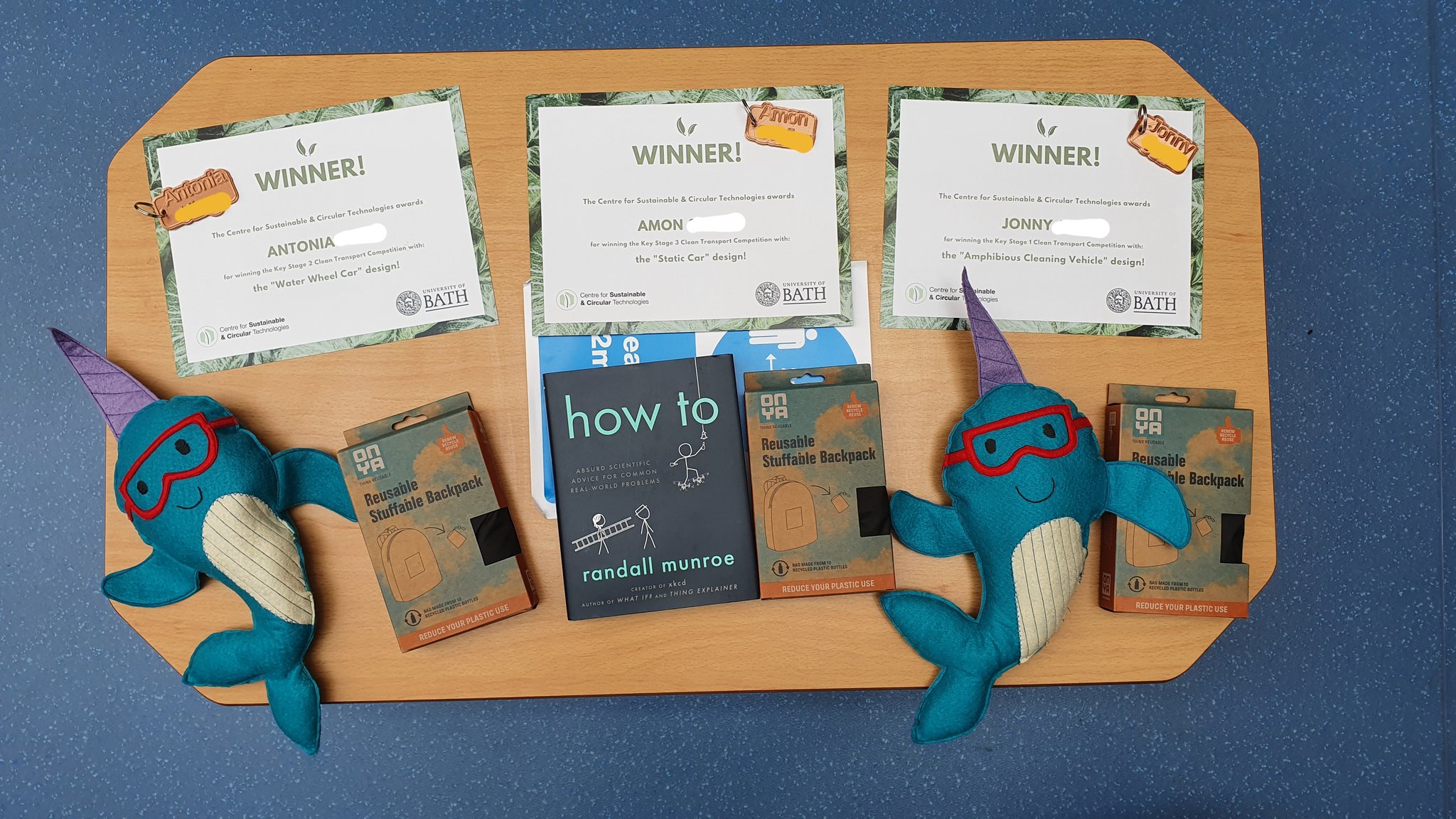
We cannot wait to see what ingenious ideas our next competition will bring!
Respond


